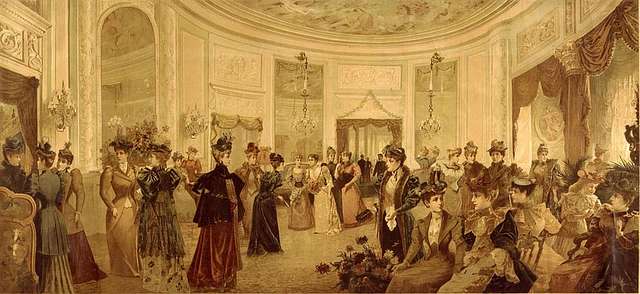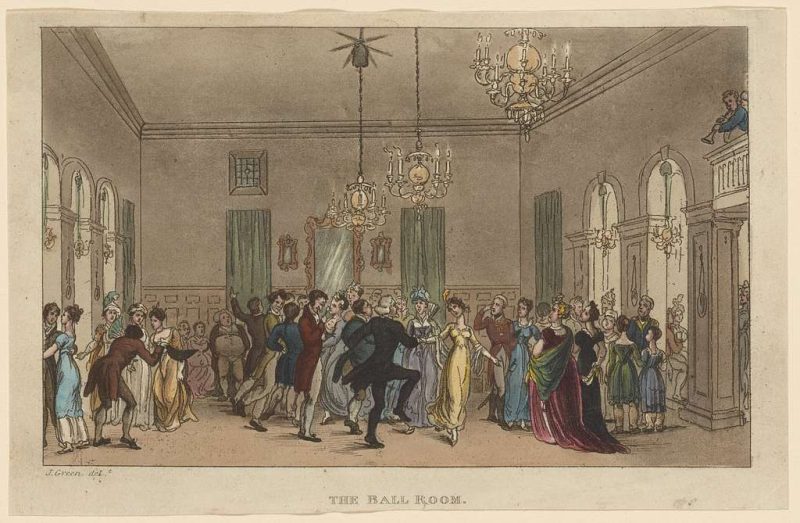
The ballroom was the heart of Regency social life, a place where young men and women could meet, flirt, and form connections under the watchful eyes of chaperones. However, the ballroom was also governed by strict rules of etiquette, which dictated everything from the choice of dance partners to the proper way to decline an invitation.
The Importance of Balls
Balls were a key feature of the London Season, a series of social events that took place each spring and summer. For young women, balls were an opportunity to make their debut in society and attract potential suitors. For men, they were a chance to socialise, network, and, of course, dance.
The most prestigious balls were held at venues like Almack’s Assembly Rooms, where entry was by voucher only. These events were highly exclusive, and a single misstep could damage one’s reputation.
The Rules of the Ballroom

The etiquette of the ballroom was complex and unforgiving. Some of the key rules included:
- Dance Cards: Women carried dance cards to record the names of their partners for each dance. Once a dance was promised, it was considered a binding commitment.
- The Opening Dance: The first dance of the evening was usually a minuet or a country dance, and it set the tone for the rest of the ball.
- Dances were organised in ‘sets’ – groups of dances which might last for half an hour in total, before there was a break to allow the orchestra and the dancers a chance to catch their breath. Most dances followed a structured form, where couples moved up and down a line, and circled around each other – there wasn’t the ‘free for all’ movement of individual couplesa around the dance floor that is found in modern dancing.
- The Waltz: Introduced to England in the early 19th century, the waltz was initially considered scandalous due to its close hold and fast tempo (note that the waltz then was more like what we call the ‘Viennese Waltz’ today – much faster than our standard waltz). However, it quickly became popular, particularly among younger dancers.
- Chaperones: Young women were always accompanied by chaperones, who ensured that their behaviour remained proper and that they did not dance with unsuitable partners.
The Social Implications
The ballroom was a microcosm of Regency society, reflecting its hierarchies and values. A successful ball required careful planning and adherence to etiquette, and even a minor breach of protocol could lead to social ostracism.
For women, in particular, the ballroom was a high-stakes environment. A well-executed dance could enhance one’s reputation, while a misstep could lead to gossip and scandal. The pressure to conform to societal expectations was immense, and many young women found the experience both exhilarating and exhausting.
The Legacy of the Ballroom
The traditions of the Regency ballroom have left a lasting impact on social dance and etiquette. While the rules may have relaxed, the emphasis on grace, decorum, and mutual respect remains central to modern ballroom dancing.
Conclusion
The etiquette of the ballroom offers a fascinating glimpse into the complexities of Regency society. It was a world where every gesture and interaction were laden with meaning, and where the stakes of social success were incredibly high. The ballroom remains a symbol of the elegance and formality of the era.
References for Further Reading:
- Did women actually use dance cards at Regency Balls?
https://historylizzie.co.uk/2024/07/15/did-women-actually-use-dance-cards-at-regency-balls/ - Sign your name across my card
https://regency-explorer.net/dancecard/

Leave a Reply